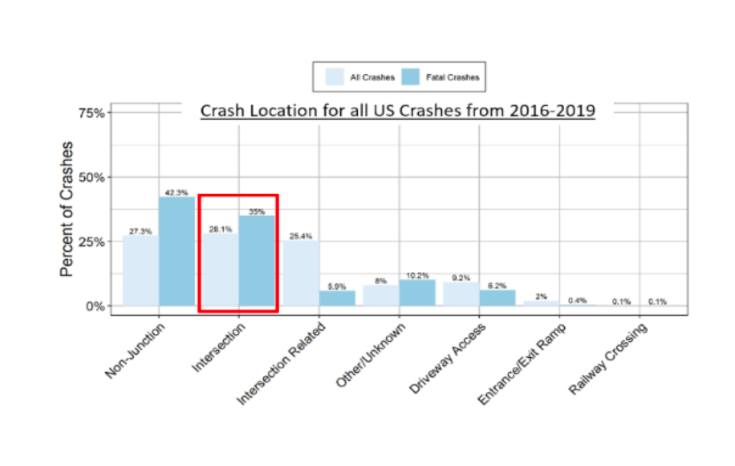
Toyota Research Center studies intersection safety and evasive actions
By onAnnouncements
Toyota’s Collaborative Safety Research Center (CSRC) and Virginia Tech recently studied how ADAS can be used to identify possible unexpected outcomes at intersections.
Recently retired CSRC Senior Principal Engineer Rini Sherony spearheaded the three-year project along with Zhaonan Sun, a CSRC principal scientist.
The team constructed a driver behavioral model in intersection crashes based on real-world intersection traversals, according to a press release. The model was applied with a potential Intersection-ADAS.
Three scenarios were studied: Straight Crossing Path (SCP), Left Turn Across Path Opposite Direction (LTAP/OD) and Left Turn Across Path Lateral Direction (LTAP/LD).
“Evaluating these directions was crucial considering that intersection crashes are the second-highest number of crash fatalities and are the highest overall type of crashes in the U.S,” the release says.
The project was designed to inform updates to Toyota Safety Sense (TSS), the release says.
“In the first version we looked at car crashes in depth and, how it happens. From that we developed the countermeasure,” says Sun in the release “For the next version of the system, the team wanted to figure out how to integrate driver behavior like braking and warning so that it’s even more like what real-world drivers experience on the road.
“So, we needed to look at naturalistic data from different sources, a representation of the real roads across the nation so we could create a reasonable model.”
Several driver behavior prediction models were developed from 43,000 crashes, near crashes and normal intersection traversal data in the Strategic Highway Research Program (SHRP-2) and Virginia tech Cameras for Advancing Safety Technologies (VT-CAST) driving datasets.
“We have the detailed scenarios, we know where the cars are coming from, we know what other objects are around, and we also know where the system is supposed to activate and at what speed. TTC (we call it TTC: time to collision),” says Sun. “So, we did all that and had the driver just sit there and do nothing in the simulation and then record if there was a crash prevention. The output is automatically generated and aggregated. All these results feed into the machine learning algorithm, which is then added to the crash avoidance driver behavior model.”
The model was used with I-ADAS system parameters to estimate crash avoidance in 2021 National Highway traffic Safety Administration (NHTSA) proposed test scenarios.
“When I-ADAS was simulated without driver intervention, I-ADAS was activated in 93% of the crashes (48% crashes avoided or 45% of crashes were mitigated),” the news release says. “I-ADAS with driver intervention (driver braking/steering) was only able to avoid 82% of the crashes.”
The release says thousands of different driver behaviors were input into each of the simulations.
“We don’t develop the systems out of the sky,” Sun says in the release. “We work incredibly hard and follow a very, very detailed engineering process to be able to come up with some of the system designs.”
Sherony said she she’s devoted her life to improving car safety including working on crash avoidance since she started with Toyota.
“When you don’t hit a pedestrian then you are helping the pedestrian,” Sherony says in the release. “When you don’t hit another car, you’re helping the other car occupants, too. The more crashes we prevent, it helps you. We are helping save people’s lives. So, safety is extremely important.”
IMAGES
Feature photo courtesy of ollo/iStock.
Emedded graphic courtesy of Toyota.

